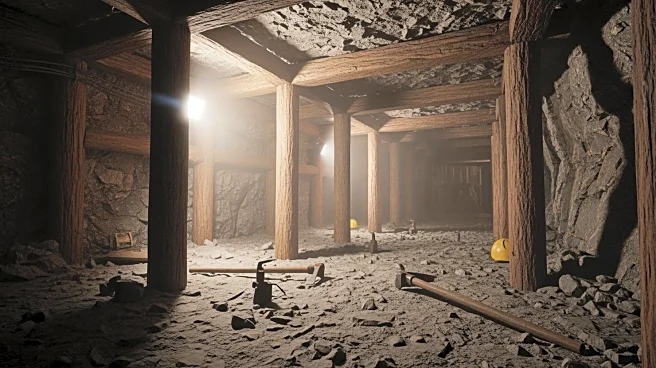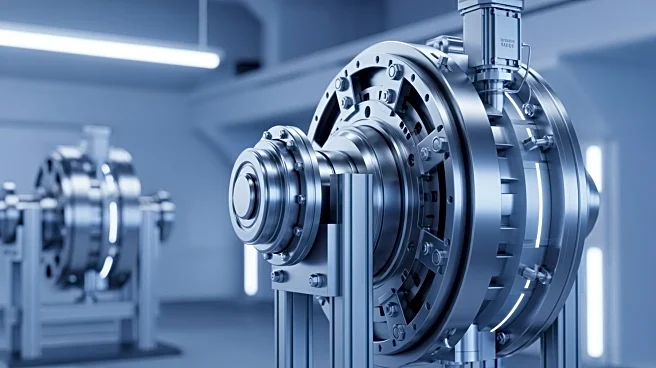What's Happening?
The coal mining industry is grappling with significant safety challenges following recent disasters that highlight the need for improved operational practices. In 2023, the United States experienced 40
mining fatalities, marking the highest number in a decade. The following year saw 28 deaths, including four in Appalachian coal mines, primarily due to powered-haulage accidents. These incidents underscore the vulnerabilities within mining operations and the urgent need for proactive safety strategies. Globally, roof and coal falls in underground mines account for a substantial portion of fatalities, with U.S. data from 1983 to 2020 indicating that 'fall or slip' incidents accounted for 27.59% of deaths, surpassing fatalities from gas or dust explosions. Environmental hazards, such as respirable dust and crystalline silica, also pose serious risks, necessitating stringent dust management and ventilation practices.
Why It's Important?
The recent mining disasters highlight critical safety and environmental challenges that have significant implications for the coal industry. The fatalities and environmental hazards not only affect the well-being of miners but also threaten the operational efficiency and sustainability of mining companies. Addressing these issues is crucial for reducing fatalities, minimizing environmental impact, and ensuring compliance with federal regulations. Improved safety measures, such as preventive maintenance, operator training, and real-time monitoring, can enhance operational resilience and productivity. Furthermore, integrating environmental management with operational safety can create safer and cleaner mining environments, benefiting both workers and the industry as a whole.
What's Next?
The coal mining industry is expected to implement more rigorous safety protocols and environmental controls to prevent future disasters. This includes enhancing ground stability measures, improving dust management systems, and conducting regular audits to identify emerging risks. Mining companies may also invest in advanced technologies for real-time monitoring and hazard detection to ensure compliance with safety standards. Stakeholders, including regulatory bodies and industry leaders, are likely to push for stricter enforcement of safety regulations and increased investment in safety training programs. These efforts aim to reduce fatalities, protect workers, and promote sustainable mining practices.
Beyond the Headlines
The integration of operational safety and environmental management in the coal mining industry could lead to long-term shifts in industry practices. By embedding hazard control and fostering a strong safety culture, mining operations can achieve sustainable production while minimizing environmental impact. This approach not only enhances worker safety but also aligns with broader environmental and sustainability goals, potentially influencing public perception and regulatory policies. The lessons learned from recent tragedies may drive innovation in safety technologies and practices, setting new standards for the industry.











